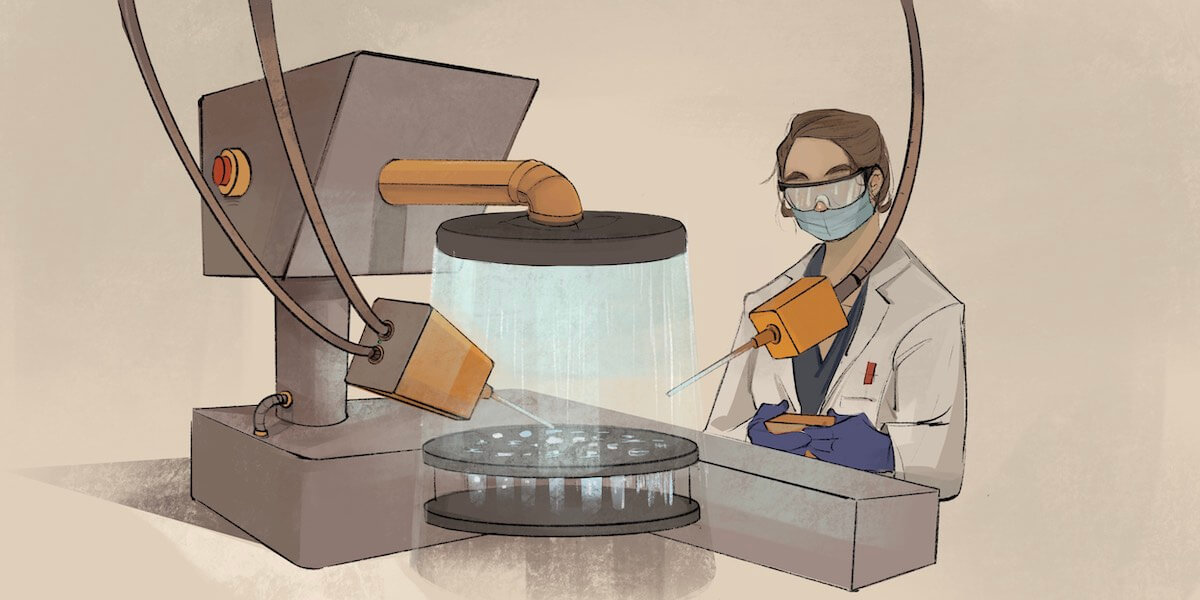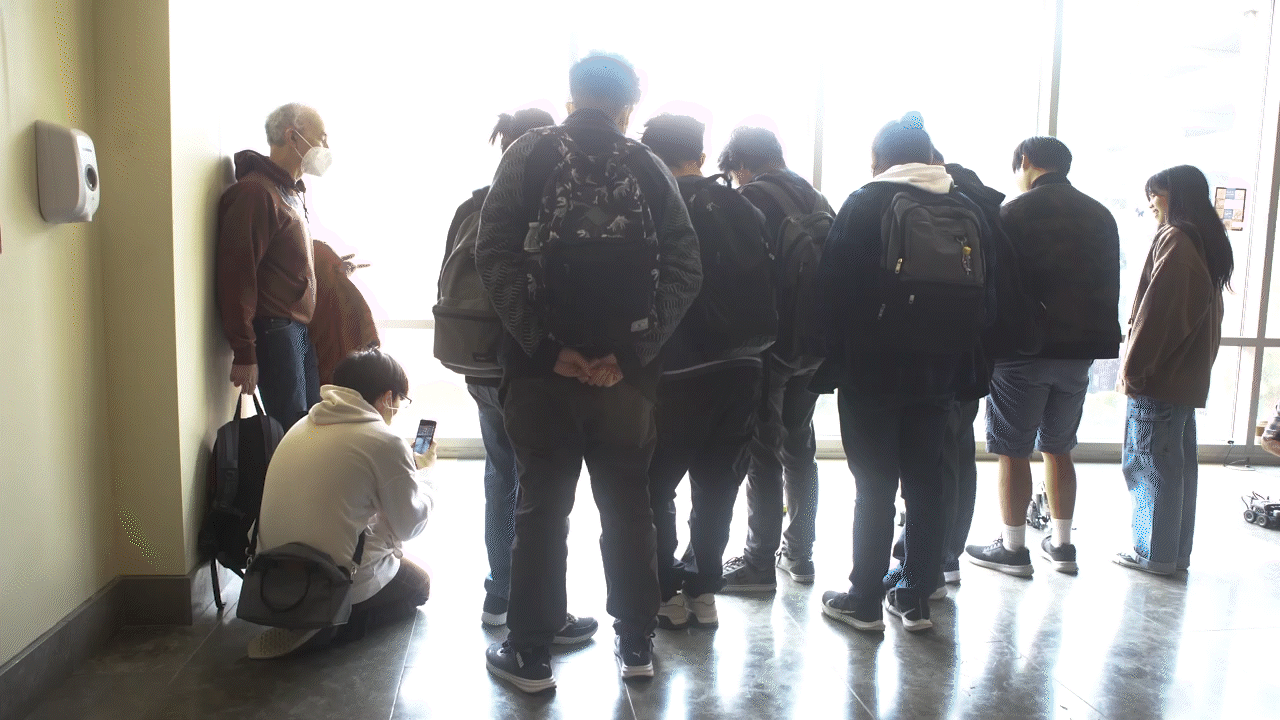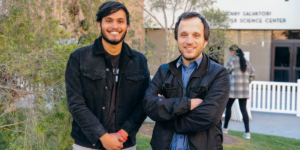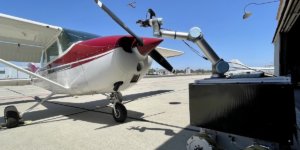
Image / Shutianyi Li
This Fall, following the National Academy of Engineering (NAE) Call to Action for engineers to “crowdsource and collectively brainstorm engineering solutions for the coronavirus disease (COVID-19),” USC Viterbi is offering “Viterbi vs. Pandemics!,” a new lecture series by USC Viterbi faculty to comprehensively provide an engineering-centric framework for addressing and understanding the COVID-19 pandemic.
During the 10-week, free program, students gain exposure to myriad topics, ranging from the estimation of risk and protein engineering by directed evolution to the contributions made by computer science and electrical engineering faculty in automating human safety technologies, detecting misinformation and digital contact tracing. The one- to two-hour sessions take place on Thursdays at 6 p.m.
For the fourth lecture on October 1, Smith International Professor of Mechanical Engineering and Computer Science SK Gupta spoke about how robots and automation can help tackle key challenges faced by manufacturing and other industries during the pandemic.
The following is a Q&A about the lecture.
For those who missed it, can you briefly summarize your lecture for a general audience?
SG: My lecture mainly focused on challenges that people are facing in the manufacturing industry, as a result of the global pandemic. These challenges include social distancing requirements on the shop floor and also labor unavailability and reduction of capacity caused by the need for sick workers or workers with sick family members to isolate.
Specific to social distancing, manufacturing has relied on hands-on training—people standing close to each other during training. How can we overcome such challenges? We know complete automation can’t work on its own but human-robot collaboration can be effective. For instance, can you insert a robot between two human workers in your assembly line? This will provide social distancing.
Building on this further, I spoke about the idea of telerobotics, where people can work from their homes and drive the robot remotely. This way, they are still able to care for their kids or other family members. Training can be handled similarly, through video conference or other remote tools such as telepresence robots.
We also explored the issue of disinfection. Workers in manufacturing roles cannot be assigned disinfection tasks, given reductions in capacity. This task needs to be completed in a different way. So how can we repurpose automation technologies to adapt it for this disinfection challenge?
The food industry and manufacturing industry have similar challenges.. Using the food industry as an example, I spoke about how social distancing requirements can be met at grocery stores and restaurants. How can you avoid an infected person infecting other people? Can you use robotics to achieve social distancing and reduce the amount of spaces that need to be disinfected?
We also touched on what’s happening in the medical arena, from diagnostics to patient care, surgeries, and service operations– how can robotics help?
Why is this research important? How will it help in the fight against COVID?
SG: Again, the challenges that people face right now are basically social distancing, the lack of availability of people—people cannot report to work—and disinfection. Automation can help address these challenges.
How would you compare your research to similar research or ideas, either in academia or industry?
SG: A lot of people have been working on automation, but what makes our work different is that we’ve always viewed robots as assistants to humans. We focus on human-centric automation and explore how automation can enhance human productivity and capability. So that’s a mindset that we brought.
If you think in terms of what is happening in this pandemic world, the risks are too high to deploy complete automation. If automation fails, the consequences will be disastrous. So that’s what makes us unique, because we have always said that human oversight and human direction is a critical and important piece of deploying automation. Therefore we can make humans safe, but at the same time, we can include human supervision.
What are the next steps and/or milestones in terms of your work?
SG: We’re continuing to advance the technology, and then we will continue to do more challenging experiments to keep pushing the boundaries of what’s possible. That also includes making the robots more intelligent and increasing their capacities to further enhance human capabilities by offering humans better assistance. .
Tell us about your collaborators.
SG: In this work, we’ve partnered with Andrea Armani on the UV disinfection end of it.
We have also gotten a lot of input from people in the manufacturing industry. They are providing input from the perspective of what kind of automation is likely to work—e.g. what kinds of interactions technologies need to be developed between robots and humans.
Can you share one story from your pandemic life? What are you doing to stay sane?
SG: Staying home is challenging. But one positive thing that has happened as a result of the pandemic is that I exercise quite a bit now. Before I was leaving early and coming home late, but now say I’ve scheduled a one hour meeting and it ends in 45 minutes, I have time leftover to take a walk or hop on my elliptical.
From a research perspective, what do you consider the most surprising or counter intuitive aspect of the virus or the pandemic as a whole?
SG: Our group does a lot of large experiments. We were expecting some inefficiencies as we were switching to work under social distancing rules. However, we are now realizing how much we were benefiting from informal communication and collaborations in the lab. When we had a problem, a lot of people were available to debug it and solve it. Now the person doing the experiment will have to do it by themselves. If they need help, they will need to call for a meeting on Zoom. This takes a lot of time.
So all the physical collaboration that was tremendously beneficial in our lab has been lost. The wisdom of crowds—when people are looking at experiments informally and constantly working together—is being lost right now.
What are some words of wisdom regarding the pandemic that have meant a lot to you?
SG: This is a challenging time and it will be over soon. We’ve been working with that motto. But also I’ve heard a lot of people talk about cherishing the new opportunities created; I am spending a lot of time with my family and get to eat all my meals with them each day, which I couldn’t do before, because I wouldn’t be home in time for dinner on many days.
What is the main takeaway from your talk?
SG: Human centric automation is really valuable in terms of keeping us all safe and enhancing our productivity
Published on October 14th, 2020
Last updated on October 14th, 2020













